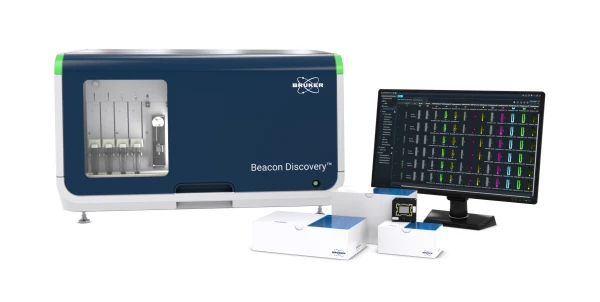Compact Mass Spectrometers Offer Versatility for a Variety of Food Testing Applications
There are obvious implications with miniaturizing a mass spec which include inefficiency of ionization, vacuum limitations, and power concerns. Modern compact mass specs have addressed these and other issues with notable levels of success for food testing applications and beyond.
Ambient ionization
Ambient ionization and sampling, which is essentially ionization from a natural state without sample workup, has been the first hurdle to overcome in CMS applications, . Ambient ionization techniques including desorption electrospray ionization (DESI), direct analysis in real time (DART), and others have had limited use in CMS due to general requirements for high vacuum, high gas flow, high voltage, and other issues. Alternative approaches on the other hand, including various paper spray and plasma source techniques, have been met with both compatibility and efficiency in many CMS platforms.
In paper spray ionization, sample, solvent, and voltage are applied at once to a paper or porous material cut to a point. The high voltage and sharp point results in desorption of changed microdroplets which form gaseous molecules for analysis. The technique requires no additional sample prep, is compatible with low gas flow, and can work with low voltage upon use of carbon nanotubes or other modifications. Many variations to the basic technique have made it both versatile and adaptable to a variety of devices and analytes.
Atmospheric pressure ionization
Atmospheric Pressure Chemical Ionization (APCI) is a plasma method in which a high DC voltage is applied to a sharp needle thereby producing a corona discharge which is then carried by the gas flow. Again, the technique requires no additional sample prep, although it is compatible with LC and other separations techniques, and can characterize trace analyte concentrations in combination with a suitable MS device.
Advion has successfully incorporated this technique and a modification for solids analysis, atmospheric solids analysis probe (ASAP), inline with their Expression compact mass spectrometers. Several further modifications have been developed as well including vAPCI, which involves analysis of volatile compounds such as fatty acids released through sample heating processes. These approaches have allowed the rapid and sensitive detection of analytes ranging from dietary supplement compounds to signatures of olive oil, cheeses, and other food types.
The advantages of a platform like the Advion Expression CMS extend to a much greater number of potential applications as well due to compatibility with several integrated sample preparation techniques. The Expression CMS devices allow users to move from one technique to another, for example thin layer chromatography (TLC) to flash chromatography to (U)HPLC, through the use of switching valves. In addition to reducing analysis time, this reduces down time involved in replumbing the system to suit specific needs.
Food testing and beyond
Beyond the food testing industry, devices such these have use in many industries where portable and capable MS analysis is needed, including water purity, environmental sampling, and clinical diagnostics. The portability means the devices can be quickly moved down the hall or into remote facilities. The efficiency means trace analysis can be performed on minute amount of analyte, whether it be a drug or blood sample for instance. The rapid processing time means samples can be quickly screened without the need for time and resource intensive sample workup and instrument operation.
Outlook
With globalized food production and transport, there are expanding requirements to ensure agricultural quality and product safety. Testing devices are needed not only in labs dedicated to routine inspections, but also in satellite or remote locations near to the food stuff. Instrument manufacturers such as Advion have developed innovative methods to address the needs for rapid, low cost, effective screening applications, technologies which offer promise in the evolving world of food safety testing and beyond.
Updated October 2019










